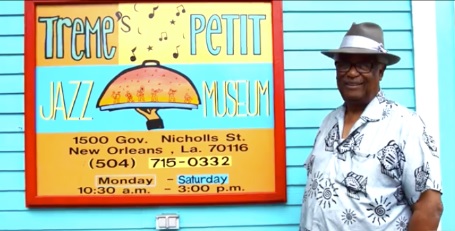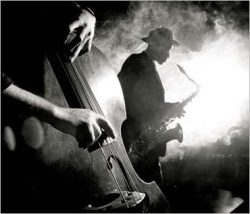Blog, Jazz on the Tube Interview

Interview with Martin Torgoff
Interview
Download the mp3 here
Jazz on the Tube’s Ken McCarthy talks with Martin Torgoff about this new book “Bop Apocalypse”
Every jazz fan knows that the jazz scene and the drug scene have intersected at times.
Sometimes benignly in the case of Louis Armstrong’s daily cannabis use. Sometimes catastrophically in the case of the tragic heroin epidemic unleashed by Charlie Parker in the 1940s and 50s.
It’s not always a pleasant topic, but it is part of the history and as George Seldes used to say “Even the gods can’t change history.”
In the second half of the interview Martin and Ken go into depth about one of the great heroic stories of jazz and human rights: Billie Holiday’s championing of the song “Strange Fruit.” You may think you know the whole story. I guarantee you don’t. Your appreciation of Lady Day will grow further.
About Martin Torgoff
Martin Torgoff has been at the forefront of major media trends and cultural currents for more than thirty years, documenting and telling the story of America through the evolution of its popular culture as an award-winning journalist, award-winning and bestselling author, documentary filmmaker, and Emmy-nominated television writer, director, and producer.
His book American Fool: The Roots and Improbable Rise of John “Cougar” Mellencamp was the recipient of the ASCAP Foundation Deems Taylor Award. He is also the author of Can’t Find My Way Home: America in the Great Stoned Age, 1945-2000.
Today Torgoff applies his understanding of American pop culture to projects that include articles, books, film, television, lectures, multimedia events, and advertising/promotion.
– Ken McCarthy
Jazz on the Tube
P.S. Our unique programming is made possible by help from people like you. Learn how you can contribute to our efforts here: Support Jazz on the Tube
Thanks.
Blog, Jazz on the Tube Interview

Interview with Treme’s Petit Jazz Museum founder Al Jackson
Interview
Download the mp3 here
New Orleans is the world’s great open air university of jazz.
I have two wishes for all jazz fans:
1. That they visit New Orleans at least once
2. That they are lucky and get a good orientation to the city when they do (Like all cities it’s easy for first time visitors to get turned around without little a guidance.)
If you want to start your trip to New Orleans off on the best possible foot, my advice is make Treme’s Petit Jazz Museum your first stop.
You’ll discover one of the city’s most important neighborhoods and one that few tourists get to see. You’ll get a feel for the abundance of cultural influences that formed jazz. Plus you’ll meet one of the local heroes whose love for the city, the music and human culture makes New Orleans so great.
Some background on the Museum
Treme’s Petit Jazz Museum founder Al Jackson grew up in the Treme neighborhood of New Orleans, and has made it his life’s work to study New Orleans’ musical history. After working on many other projects all over the world (six years in the U.S. Air Force, data analysis to help create the Saturn IB rocket, and time in the New Orleans city government), Al has turned his attention to achieving his long-time dream: opening a museum dedicated to the history of jazz, right in the Treme.
Along with a group of local musicians and enthusiasts, Al created the Treme’s Petit Jazz Museum Foundation.
In 1997, Al and his business partner Paul Sylvester (owner of Sweet Lorraine’s Jazz Club) purchased the building at 1480 N. Claiborne Ave., the former home of Local #496. They were unfortunately unable to save the structure, and the building has since been demolished.
Al and Paul were surprised and pleased to find a treasure trove of artifacts on the property, attesting to the rich history of New Orleans music. These discoveries include: a ledger of performances inside the New Orleans city limits for the years 1939-1968, hundreds of performance contracts for local and visiting artists (Louis Armstrong, Ray Charles, B.B. King, Professor Longhair and many more), dozens of recording contracts from local producer Cosimo Matassa’s studio (Fats Domino, Little Richard, Dr. John, and Allen Toussaint to name a few).
More information on this unique cultural resource go here: https://www.facebook.com/tremespetitjazzmuseum/
– Ken McCarthy
Jazz on the Tube
P.S. Our unique programming is made possible by help from people like you. Learn how you can contribute to our efforts here: Support Jazz on the Tube
Thanks.
Afro-Cuban culture, Blog, Cuba, Cuban Jazz, Jazz on the Tube Interview, Latin Jazz, The Cuba-US connection, Video and audio
Interview
Download the mp3 here
Ken talks with jazz veterans Jane Bunnett and Larry Cramer about their musical odyssey in Cuba which began over 30 years ago in 1982.
You will not find North Americans anywhere who have a deeper connection with the island, its music and its musicians.
If you’re at all interested in Cuba and its music, lock the door, turn off the ringer on your phone and dig in. Don’t miss this.
Two excerpts from the documentary “Cuban Odyssey: Spirits Of Havana” about Jane and Larry’s musical adventures in Cuba.
Jane and Maqueque, an extraordinary band of young Cuban musicians recording and on tour in North America.
You can learn more about Maqueque here.
– Ken McCarthy
Jazz on the Tube
P.S. Our unique programming is made possible by help from people like you. Learn how you can contribute to our efforts here: Support Jazz on the Tube
Thanks.
Blog, Cuba, Jazz on the Tube Interview
By Gabriela Resto-Montero
It was almost as if William Sabourin O’Reilly had to look away from Cuba to see it more clearly. Sabourin, a documentarian who is based in New Orleans, hasn’t lived in his home country for 17 years but the island nevertheless has become the central focus of his film “Código Color, Memorias,” which premieres at the New Orleans Film Festival Oct. 15.
The short film manages a conversation about race on the island and the prejudices that were in place leading up to the revolution.
“That taboo has existed for many years, it was said that [racism] was eradicated in 1964 so you, in 1994, can’t say that there’s prejudice because that’s the revolution,” Sabourin said. “The topic is not discussed and it was swept under the carpet so that you wouldn’t get in trouble. The people who love you would say ‘Shhh, be quiet,’ and created that habit. People don’t speak.”
Despite some apprehension that broaching such a controversial topic might get himself censored, Sabourin shot the film in the hopes of starting a dialogue where none has existed for nearly 60 years. Sabourin’s status as an expatriot provided the critical distance needed to both understand the nuances of race on the island and highlight where they are uniquely Cuban.
“In so far as I’ve lived here for many years, and that I’ve remained close to Cuba, and that I’m black, that I come from humble beginnings,” he said. “I developed as a filmmaker in the United States, I’m seeing it through the prism of the United States.”
Sabourin moved to Virginia in 1999 as a newlywed. There in Petersburg the documentarian found work in construction as he tried to learn English. Not fond of the snowy winters in Virginia, Sabourin jumped at the chance to study in Louisiana.
He transitioned into work as fulltime filmmaker on a wild gamble to stay in New Orleans as Hurricane Katrina hit. He gathered the equipment that he’d saved up to buy during his work broadcasting horse races and recorded as much as he could of the storm.
“I stayed for five days recording everything that crossed my horizon,” he said. “Until I ran out of resources–water, food, and film.” Once he evacuated to Kentucky, Sabourin and his old team from the racetrack edited the footage and published a DVD that he sent to everyone in his personal phone book.. The resulting footage landed him work on documentaries for everyone from HBO to the History Channel to Spike Lee.
Along with his colleagues, Sabourin founded Tungsten Monkey Films to produce more independent projects. Among them, a feature-length on Santiago de Cuba’s annual Carnaval competitions called “La Oruga y La Mariposa (The Caterpillar and the Butterfly)” due out next year. Here, too, Sabourin sees his home country with new eyes.
Both “La Oruga y La Mariposa” and “Código Color, Memorias,” which premiered in Cuba last year, come at a time when the warming relationship between the U.S. and Cuba has fed public curiosity about life on the island. Although “Código Color, Memorias” documents Cuba on the verge of revolution, it’s premiering as the nation once again finds itself on the cusp of a great political change when the lessons learned in generations past might be instructive.
“It’s been almost 60 years with the same ideology and there are many young people, as they say in the United States, ‘millenials,’ who hardly know Fidel Castro because he’s been ill,” said Sabourin, who is 44. “They don’t know the Fidel that I knew, who was an active person.”
Sensitive subject or not, the film was broadcast on national Cuban television and discussed by a panel of experts last April. Now, Sabourin hopes that students in the United States and across Latin America can watch the film and discuss their own experiences and realities.
“What we wanted was to start a modest dialogue between between the young and not-so young,” he said.
You can listen to the full-length Jazz on the Tube interview with William Sabourin in Spanish below.
Interview
Download the mp3 here
Interview excerpts
On hardship in Cuba in the 1990s:
“I was 17 when the Berlin Wall fell. That’s when life started to change, when we had scarcity because we had been completely subsidized by the Communists. From one day to the next our income fell by 80 percent. External forces, like the U.S. blockade, intensified and that really turned the screw. Zero commerce, zero loans, we were between a rock and a hard place–we either had to give up or keep going. That’s when social problems started to germinate, including racial ones.”
On how race intensified income inequality:
“People with lighter complexions came to the United States, came to Miami. When the wall fell these people, light-skinned people with family in Miami, had access to money that us black people didn’t have because we didn’t have any family outside of the country. That intensified the differences, that’s when I felt it in the 1990s. There was confraternity in school but on the street there was a certain racial and political tension. People were wary of the economic and political situation. If you were hungry you couldn’t say anything because if you did then you were a counter-revolutionary.”
On the economic impact of normalizing diplomatic relations between the U.S. and Cuba:
“Obama goes to Cuba and people think that in two weeks it’s going to be like Miami Beach and that’s where you get disappointment. Looking at it clearly, things are changing slowly and with patience. We’re not going to go from being Cuba to being Hawaii.”
On the social changes taking place in Cuba:
“I’ve noticed some acute changes for the better that have had unexpected consequences. Now there are a lot of us Cubans who have lived outside of Cuba for many years, for political reasons but mostly for economic ones. People come to the United States and learn about capitalism then go back to Cuba and buy a building to create a business and that creates a difference in income that was not known before. There’s development, they paint houses, and you can see the contrast. People start to sell historic homes to better their lives but then in that house where seven people used to live there now lives one and that displaces people and the community loses.”
– Gabriela Resto-Montero
Jazz on the Tube
P.S. Our unique programming is made possible by help from people like you. Learn how you can contribute to our efforts here: Support Jazz on the Tube
Thanks.
Artist-Educators, Jazz on the Tube Interview, People, Podcasts

From South Carolina to Ghana to New York City, Frank Malloy IV and his family have been on a remarkable journey.
After inspiring trips to Ghana, Frank’s parents founded the Harambee Dance Company in Charleston, South Carolina and later brought it to New York City.
Frank, in addition to being a West African Drumming instructor for United Palace of Creative Arts (UPCA) – a stunningly beautiful former movie “palace” at 4140 Broadway (near the A Train stop at 175th Street) – is also the music director of the Harambee Dance Company.
On Saturday, June 25, he’s putting together a showcase at UPCA featuring Les Nubians, Chargeux, the Harambee Dance Company, and ADH.
Details here: Soulevate – a night of jazz, funk and Afropean soul
Interview
Download the mp3 here





